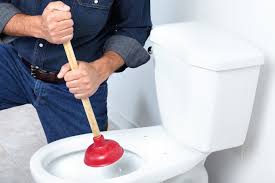A clogged bathroom drain is one of the most common household plumbing issues. Whether it’s due to hair, soap scum, or other debris, a slow or completely blocked drain can be frustrating. In this guide, we’ll explore the causes, prevention methods, and step-by-step solutions to unclog your bathroom drain effectively.Common Causes of a Clogged Bathroom Drain
- Hair: The primary culprit in most bathroom drain clogs. Hair binds with soap and other substances, creating stubborn blockages.
- Soap Scum: Over time, soap residue builds up on pipe walls, reducing water flow.
- Toiletries: Items like cotton swabs, dental floss, or makeup wipes can accidentally fall into the drain and cause clogs.
- Mineral Buildup: Hard water leaves mineral deposits that narrow pipes over time.
Signs of a Clogged Bathroom Drain
- Water drains slower than usual.
- Gurgling sounds from the drain.
- Unpleasant odors emanating from the sink or shower.
- Water backing up into the sink or tub.
DIY Methods to Unclog a Bathroom Drain1. Boiling WaterFor minor clogs caused by soap or grease, boiling water can be effective. Carefully pour a pot of boiling water down the drain in two to three stages, allowing it to work between pours.2. Baking Soda and VinegarThis natural solution works well for organic clogs. Follow these steps:
- Pour half a cup of baking soda into the drain.
- Follow with half a cup of white vinegar.
- Cover the drain and wait 15-30 minutes.
- Flush with hot water.

3. PlungerA plunger can dislodge shallow clogs. Ensure a tight seal over the drain and plunge vigorously for 20-30 seconds. Repeat if necessary.4. Drain Snake or Wire HangerFor deeper clogs, a drain snake or straightened wire hanger can reach and remove debris. Insert the tool into the drain, twist, and pull out the obstruction.Preventing Future Clogs
- Use a drain strainer to catch hair and debris.
- Avoid pouring grease or oil down the drain.
- Flush drains monthly with hot water or a baking soda-vinegar mix.
- Trim long hair before showering to reduce shedding.
When to Call a ProfessionalIf DIY methods fail or the clog recurs frequently, it may indicate a deeper issue in your plumbing system. A licensed plumber can inspect and resolve persistent problems with specialized tools like hydro-jetters or camera inspections.ConclusionA clogged bathroom drain is a nuisance, but with the right tools and techniques, you can often resolve it yourself. Regular maintenance and mindful habits will keep your drains flowing smoothly. For severe or recurring clogs, don’t hesitate to seek professional help to avoid costly damage.
